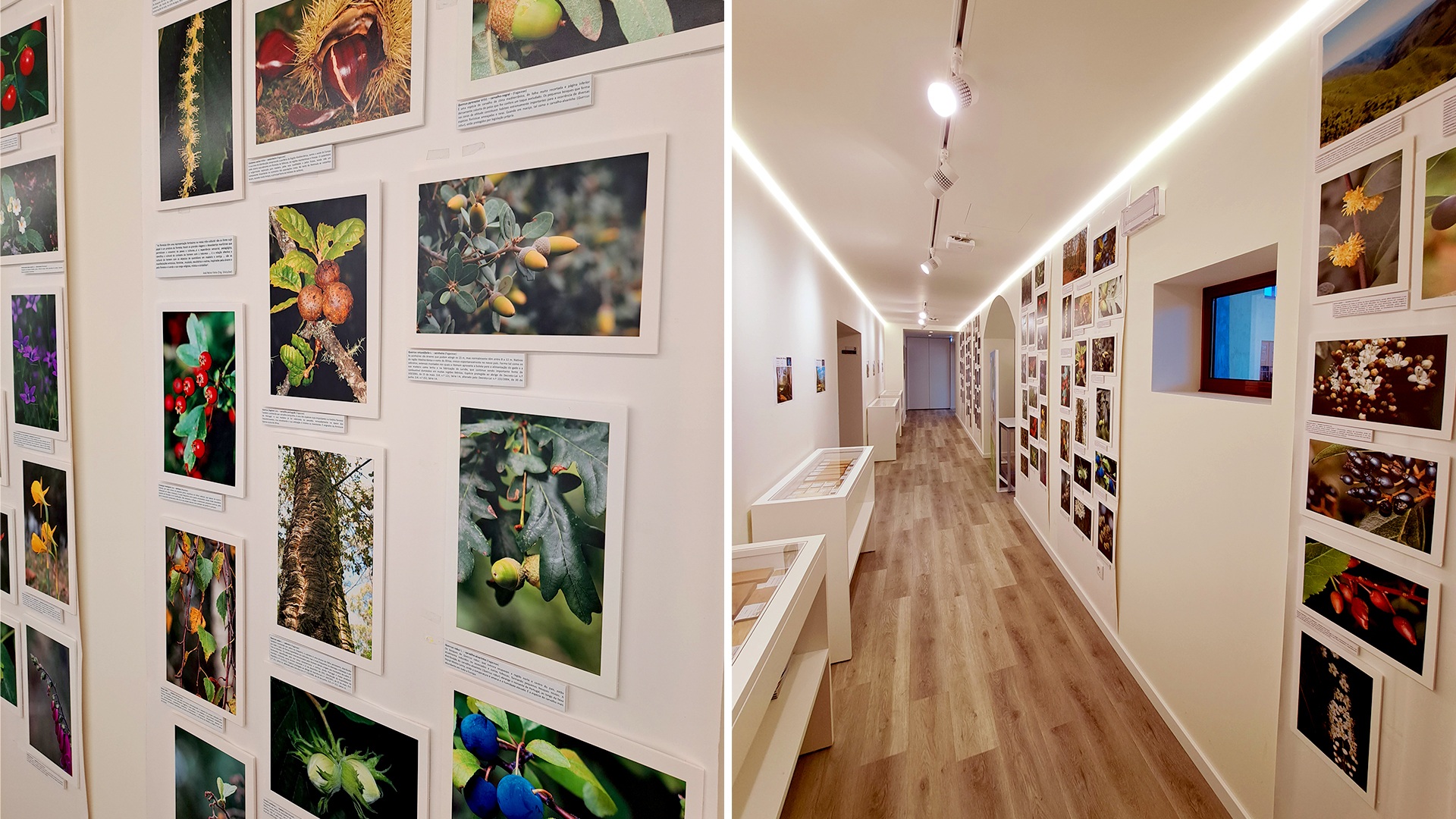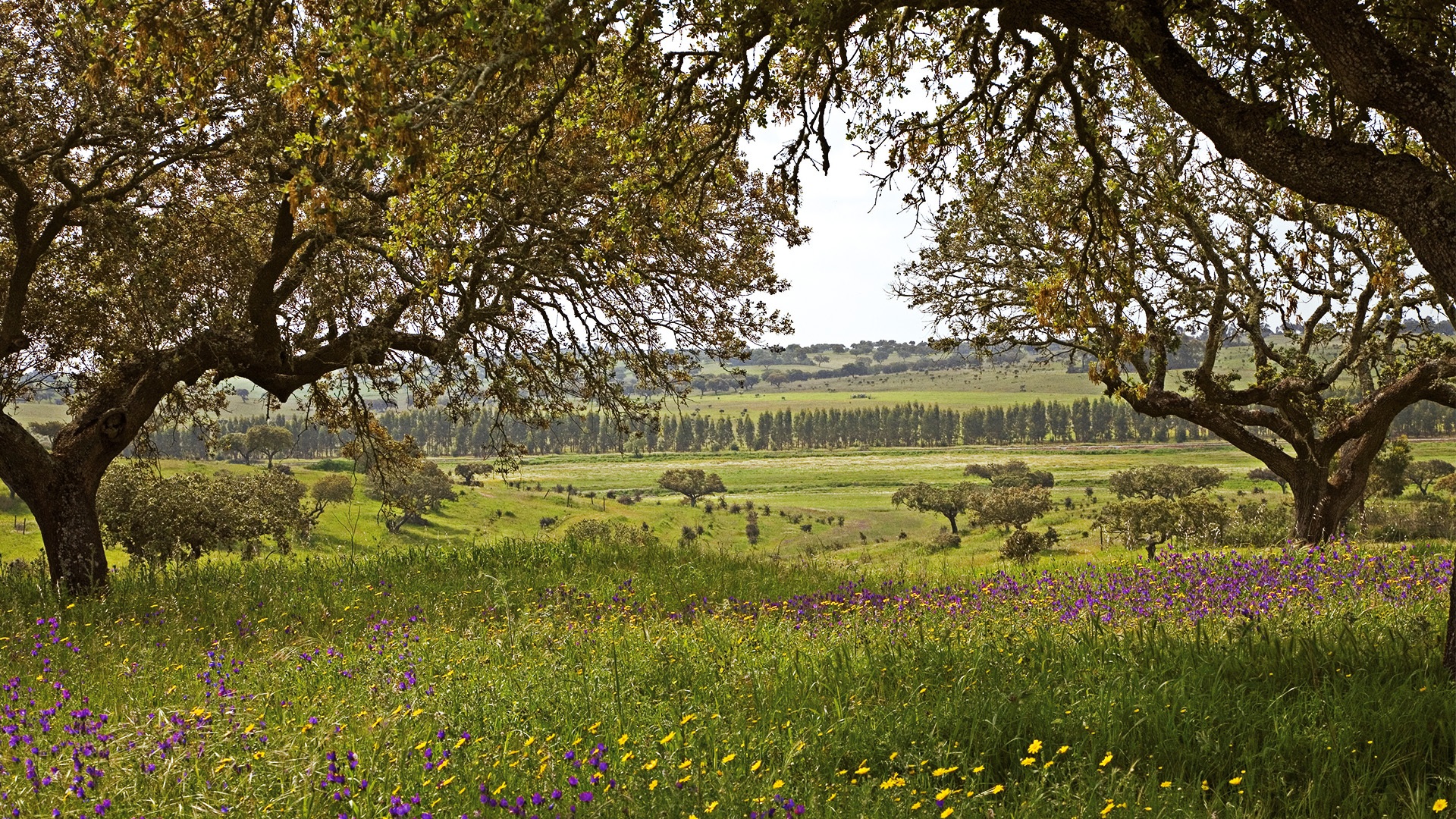The educational project Floresta do Saber, located in Eixo (Aveiro), welcomes the exhibition “Portuguese Forest – A closer look”. More than one hundred photographs displayed arouse the curiosity of visitors of all ages about the national forest. Biodiversidade.com.pt spoke with the two biologists in charge of this exhibition, one of whom was also the author of the photographs.

“We can only conserve what we know”, says Lísia Lopes, graduate in Biology and holder of a Master in Applied Biology from the University of Aveiro, biologist of the herbarium of the University of Aveiro and the author of the photographs that make up this exhibition “Portuguese Forest – A closer look”. Together with Rosa Pinho, researcher of the Department of Biology and curator of the Herbarium of the University of Aveiro for 30 years, they invite us to look closer at the Portuguese forest and the hidden details in plain sight.
For photographer and biologist Lísia Lopes, one of the objectives of this exhibition is “to show the diversity of flora species in our forest and some details of their morphology (beauty) thus capturing the public’s curiosity and raising its awareness for the need to preserve this heritage”, she said in an interview with Biodiversidade.com.pt. This is how his two interests coexist: her “great passion” for flora materializes in the action of “photographing all the elements of nature, all the biodiversity that surrounds us.”
For biologist Rosa Pinho, the exhibition highlights the importance of forests for the planet. “They are the depository of two-fifths of all the carbon stored in the Earth’s ecosystems and are considered as‘ lungs of the world’”, she said, adding that in addition to photosynthesis, “forests play extremely relevant roles at the environmental, economic, social and cultural level”.
In this exhibition, the history of the Portuguese forest is told through time through a series of 105 captioned photographs, mirroring Portuguese floristic biodiversity – after all, as Rosa Pinho points out, “Portugal, in the European context, is considered one of the countries with the greatest biodiversity.” There are countless images of endemics and relic species, as well as the Laurissilva forest (dominated by species of the laurel family which lends its name to this forest and which can still be found on the island of Madeira), the Fagosilva forest (designation coming from the phagaceae family, which includes species such as oak tree and chestnut tree) and the production forest, properly framed.
Photographing the species that can be found in the Portuguese forest, in addition to the work that is done by the herbaria and the documentation of species identified at a given time, is very relevant, she points out, emphasizing that “The important natural heritage that the native forest integrates has suffered constant pressures and threats that lead to its progressive degradation and destruction. And she warns as to its importance and conservation, the main objective of this exhibition.”
Lísia Lopes goes further by stating that these records add yet another layer of value: “I think photography can be a way to communicate science, value and make biodiversity known. Over the years, and as our knowledge of the subject grows, the eye becomes more attentive, there are always new records, new photographic frameworks and new species to register! A fascinating world that has no end…”, she concludes.
Disseminating information about the Portuguese forest in schools
To highlight the variety and perfection of the flora species of the Portuguese forest is a way of raising the awareness of the public of all ages to “the conservation of this heritage”, she says and she recalls that this exhibition, held for the first time to celebrate the International Year of Forests (2011), had 80 photos at the time. The exhibition now relies on new photographs, in order to tell “the story of our forest” as thoroughly as possible.
As for the importance of bringing the theme to schools and laboratories such as the Forest of Knowledge, she assures that “It is extremely important to make known the natural values, especially to the youngest who currently have very little contact with nature” and she believes that, by transforming her “fascination with the natural world” into an exhibition, she may contribute to the conservation of natural values, arousing “curiosity and the will to explore the natural world, so that we can all know, protect and preserve it”.
Regarding the exhibition “Portuguese Forest – A closer look”, and although “all the exposed phytodiversity is relevant”, Lísia Lopes highlights the photographs of Portuguese oak trees, which “ identify us to a great extent and which unfortunately are in decline throughout the territory, with the resulting loss of biodiversity” and Rosa Pinho highlights the role of the cork oak, recognized as Portugal’s National Tree in 2011.
Held until October 31, 2023, the exhibition is open to the public free of charge between 8:00 am and 8:00 pm (except holidays) in the educational project Floresta do Saber, within the scope of the ROOT – Forest and Paper Research Institute, R&D Laboratory owned by The Navigator Company, University of Aveiro, University of Coimbra and University of Lisbon, through the Higher Institute of Agronomy. Book your visit through the website, by email or by phone 234 920 130.



